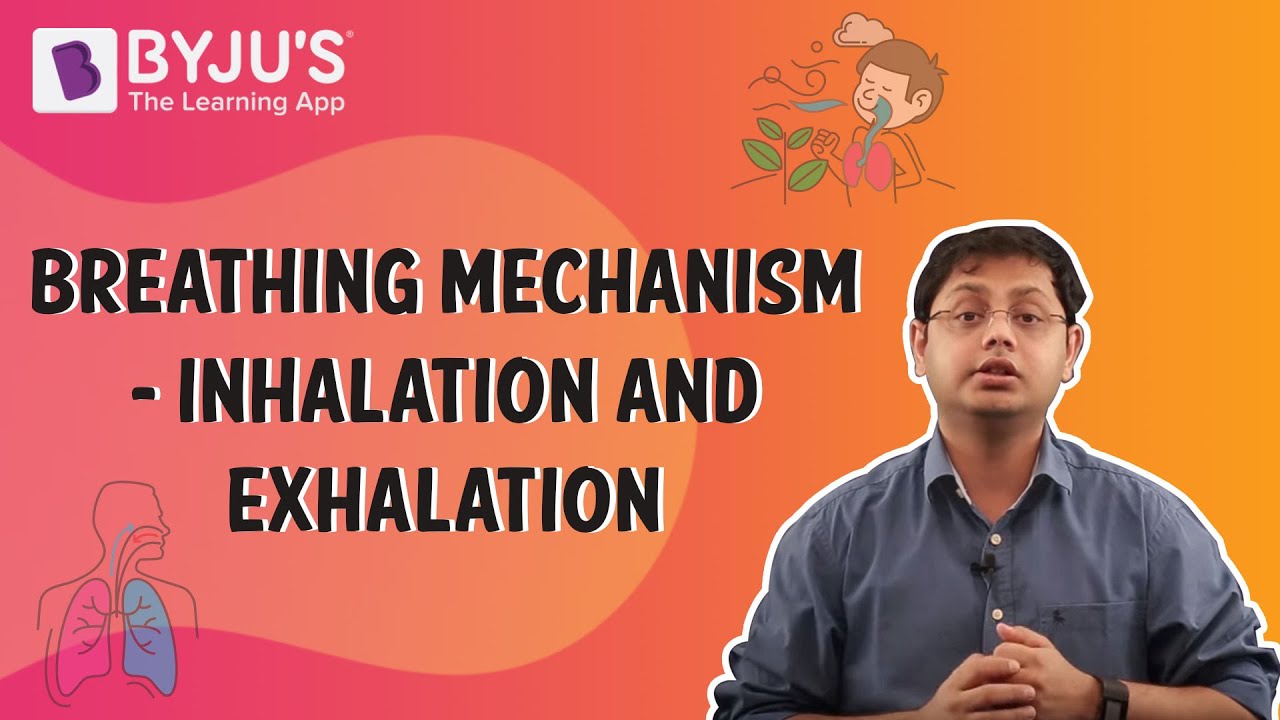Breathing is a life process. The process of inspiration and expiration is vital to provide oxygen to tissues and remove carbon dioxide from the body. The process of breathing is the moving of air in and out of the lungs facilitating gas exchange with the internal environment by taking in oxygen and flushing out carbon dioxide. Gaseous exchange occurs in the alveoli through diffusion where the body’s circulatory system transports these gases to and from the cells, thereby enabling cellular respiration.
Download Complete Chapter Notes of Breathing and Exchange of Gases
Download Now
What Is Inhalation?
- Occurs through active contraction of the muscles such as the diaphragm and is the action of breathing in
- As part of the cycle of breathing, the process is autonomic and does not need conscious control
- It begins with the contraction of muscles attached to the ribcage causing expansion in the chest cavity, where contraction of the diaphragm sets in resulting in the expansion of the intrapleural space and a rise in the negative pressure as per Boyle’s law
What Is Exhalation?
- It is the act of exhaling air taken in and is passive
- Here, the diaphragm relaxes, moving upwards into the chest cavity
- The intercostal muscles between the ribs relax, causing the area of the chest cavity to reduce
- Eventually, the area in the chest reduces and carbon dioxide-rich air is expelled out of the lungs and windpipe, ultimately out of the nose
Difference Between Inhalation and Exhalation
The table below shows the differences between inhalation and exhalation
| Inhalation | Exhalation |
| What it means | |
| Intake of air into the lungs | Expelling air out of the lungs |
| Type | |
| Active process | Passive process |
| Size of the chest in the process | |
| Increases, expands | Decreases, reduces |
| Diaphragm – role | |
| Contracts, gets flattened by moving down | Relaxes, moves up forming a dome-shape |
| Intercostal muscle – role | |
| Relaxation of internal intercostal muscles and contraction of external intercostal muscles | Contraction of the internal intercostal muscles and relaxation of external intercostal muscles |
| Lungs – volume | |
| Rises to cause inflation | Reduces causing deflation |
| Action it causes | |
| Supply of oxygen-rich air to the blood | Carbon dioxide is expelled out |
| Air composition | |
| Inhaled air is a mix of oxygen and nitrogen | Exhaled air is a mix of nitrogen and carbon dioxide |
| Air pressure | |
| Decrease | Increase |
| Effect of intercostal muscles | |
| Ribcage moves upwards and outwards | Ribcage moves downwards |
Recommended Videos:


For more information on differences between many more topics, visit BYJU’S.
| Top Differences in NEET Biology: |
what do you mean by passive and active process.
Inhalation is said to be an active process because of the fact that it requires work and energy to be carried out.
Work in inhalation is when the muscles of diaphragm contract resulting in the overall increase of the volume of thoracic cavity leading to inhalation as the pressure in lungs is lesser compared to the outside i.e., atmospheric pressure. Since muscles utilize energy for contraction, it is said to be an active process.
Expiration, on the other hand, is a passive process as it just occurs without any energy or force as such. Muscles of the diaphragm relax in this process, pressure is higher in the lungs than the outside, hence air is just compelled out of the lungs. Expiration, therefore is a passive process.
Good answers in this question